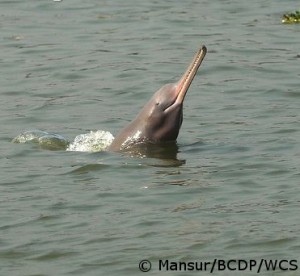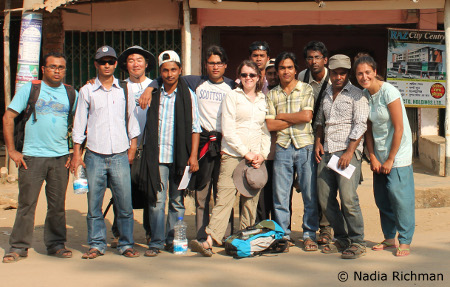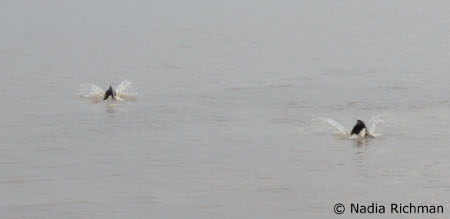
The Ganges River Dolphin (Platanista gangetica) is not your conventional ‘Flipper’: they are virtually blind and live in murky rivers; they aren’t particularly social and tend to live on their own or in very small groups; they have lots of jagged teeth that are constantly visible; and they won’t bounce balls on their heads. Despite these not so endearing qualities, I decided to make it the focus of my PhD.
Typically, mammals are very well-studied especially the cute and fluffy ones. Given this species falls into the category of ‘cute and fluffy’, we know remarkably little about it. There are huge gaps in our knowledge on the biology and ecology, and threats faced by this species. However, there is an increasing urgency to close some of these data gaps given they are now one of the most threatened freshwater cetaceans following the extinction of the Yangtze River Dolphin in 2007.
In September 2011, I headed to southern Bangladesh in the hope I could better understand some of the following: how many river dolphins are killed (accidentally and intentionally) every year in fishing gear; what types of fishing gear are responsible; can we identify particular mortality hotspots; what effect is pollution having on reproductive success; and do local people kill dolphins intentionally, and if so why.
The field season began with an interview survey across the entire range of the species through southern Bangladesh collecting data on patterns of mortality. Locals, and even the fisheries department, are not aware that the killing of a river dolphin is illegal, so fishermen were very willing to discuss accidental and intentional mortalities. Intentional killing of dolphins in this region was found to be scarce mainly because much of the community is Hindu and does not believe in killing something for no reason. They also enjoy watching the “jumping behaviour” of this odd looking “fish”, and because it reminds them of a “helicopter”!
Historically, the oil from the dolphin was extracted and used to treat rheumatism, pregnancy pains, and “lady disease” (aka period pains). However, thanks to better access to conventional medicine and the fact paracetamol tastes better than dolphin oil, this practice is dying out. In the very southern communities however, there is still some intentional killing: fishermen kill dolphins to punish them for tearing their nets, while tribal communities along the Burmese border use them as a food source.

During the course of our interviews we also successfully identified a number of mortality hotspots, along with particular fishing gears which are prone to cetacean entanglements. These sorts of data can be particularly helpful in narrowing down required conservation measures without the need to implement a range-wide fishing ban.
Another part of the project involved taking samples from dolphins that had died, to investigate chemical and pollutant levels in their bodies and how this could affect reproductive success in the species. However, over the five month field season we were only able to recover two dolphin bodies. The first carcass was in such a state of severe decomposition that I wasn’t willing to pull it on to the boat for a full necropsy, so I carefully suspended myself over the side of the boat to take a sample (face mask and goggles essential!).
The second carcass was found a month later, hanging up with a bucket under its head which indicated someone was attempting to drain it of oil. After another ‘acrobatic’ necropsy I walked away with some more muscle and blubber samples, which now have to be kept frozen. Once I have overcome the joyful task of export/import permits and shipping I should be able to have the samples analysed and gain a better understanding of any effects that pollutants may be causing in the dolphin populations. Watch this space….
Related links:
